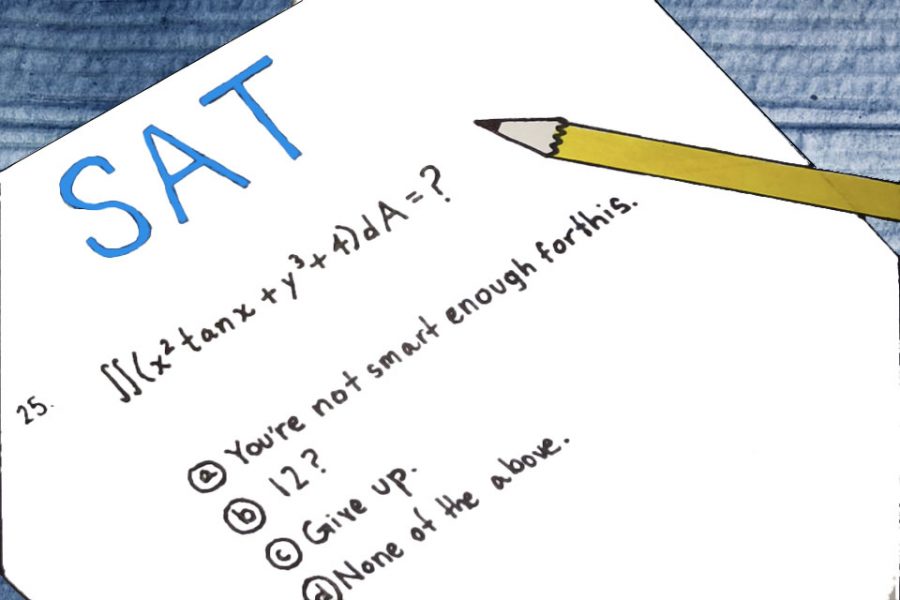Are Standardized Tests the Best Representation of Students?
SAT and ACT fill the brains and ears of high school students across the country. High scores on these tests represent the pinnacle of academic success, and the pressure students feel to excel in these tests has never been higher. They are at the forefront of every college application as well as every academic scholarship available. However, why has higher education become obsessed and surrounded by one singular test score? Does one test truly dictate the candidacy for a student applying to college? Numerous colleges across the country have transitioned away from relying solely on test scores, some as far as not requiring scores of any kind for application. All colleges need to boycott against the inaccurate weight standardized tests have accumulated and reexamine how to distinguish students from each other.
The process involved with standardized testing is a wearisome and detail oriented, which presents large amounts of stress for teachers, parents, and, most of all, students. Preparation for these exams requires tutoring for months before the test itself, which can be accessed online or through a real life class or instructor. The elongated preparation time builds up the stress felt on the test day because it increases the pressure for the student to succeed. On test day, monitors must follow and instruct strict rules upon the test-takers which also adds a third layer of unnecessary stress. This stress can have serious effects on the performance of test-takers, making it harder to retain all of the information memorized for the test. Yvette Stupart PhD writes, “If stress is not managed properly, it can prevent students from successfully achieving their academic goals.” Personally, I have always accepted academic rigor and challenges, so I had a lot of pressure to perform well on the SAT. I did months or prep beforehand, but due to the amount of stress it gave me, I performed much worse than any practice I had taken online. I learned that letting my stress control my brain was a great detriment to my performance, and many students experience the same thing.
Another aspect of standardized testing often overlooked is the cost associated with them. Kira Golding describes, “A study found that standardized tests cost some states over $1.7 billion a year.” Also, according to Vittana.org, “Even within individual school districts, the amount of funding a specific school receives is often dependent on the test scores that are achieved.” In both of these quotes, money is an issue which affects other aspects of students’ education. The excessive costs required to teach the information on the tests as well as the costs to administer the test itself raise issues within the school districts as well as within the community. Conflict is created between classrooms in a race to produce higher test scores and thus more funding, which can lead to overworked students who lack other aspects of their lives such as adequate social skills and free time with friends. In addition, the excessive costs for the administration of the test requires test-takers to pay more to take the test. The costs associated with the tests are not worth their outcomes for students.
One positive aspect of standardized tests is their ability to provide schools with vital information about their student bodies. This information can help teachers identify weak spots in their teaching that need to be highlighted, give parents information about the progress of their children as well as how their children compare to others, and show students how they have grown and where they must focus more of their studying. These resources are beneficial for all parties involved and have been resources to help students effectively improve their weakest areas of study. Administrators have also used this information to structure education on a broader scale, analyzing how the curriculum of different grades can be manipulated to improve the weakest subjects within the student body.
However, the limited scope of information on most standardized tests can cause many classes to suffer poor teaching due to “teaching to the test.” Kira Golding writes, “A trend of “teaching to the test” has become widespread in the US, which narrows teachers’ focus on only teaching subjects that will help students perform well on standardized tests. Yet, studies have shown that students are more successful when focused on learning rather than on exam performance.”So, students’ learning suffers when they are taught towards exam performance, and not taught towards cultivating a positive environment meant for learning. Many teachers use this approach, especially high school teachers, which gives students a harder time when trying to learn the information necessary to succeed. These struggles can also lead to a decreased motivation for learning. Standardized tests encourage this approach to teaching, and classrooms of students are suffering due to this mindset.
Standardized tests, though they have benefits, have many consequences for students, school districts, and communities. They cause unnecessary stress for students as well as families, they cost extravagant amounts of money, and they cause the quality of classrooms to suffer. Schools need to boycott standardized testing and focus on creating well-rounded individuals. Colleges will be filled with much more successful students if they enter well-rounded instead of focused only on certain aspects of their lives (i.e. GPAs and test scores). Students who are well-rounded will ultimately be more successful in higher education and beyond.












